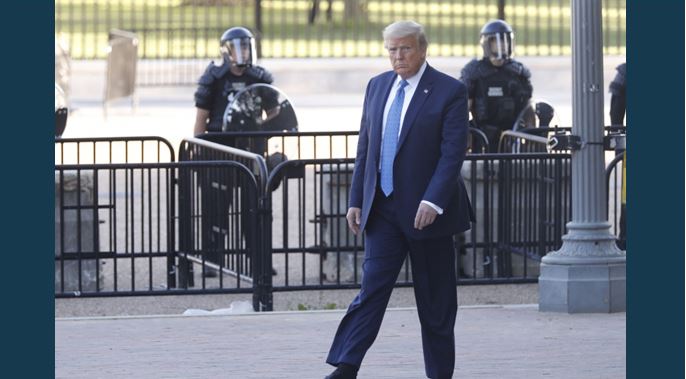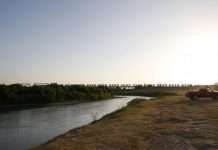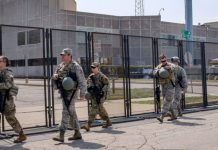Sept. 17 (UPI) — Authorities inquired about obtaining a “heat ray” to use against civil rights protesters who’d gathered near the White House this summer — on the day federal forces were criticized for using tear gas to clear a path for President Donald Trump, a whistle-blower said in congressional testimony.
The statements were made by Maj. Adam DeMarco of the District of Columbia National Guard late last month to the House natural resources committee. They were obtained and posted online Wednesday by NPR.
DeMarco’s remarks were follow-up statements that came after his appearance before the House committee in late July.
On June 1, the Pentagon’s lead military police officer for the D.C. region sought an Active Denial System — a crowd control device that uses microwaves to produce a burning sensation on the skin — during a rally at Lafayette Park over the police killing of George Floyd in Minnesota.
DeMarco, who has sought whistle-blower protection, testified that authorities’ request for the “heat ray” came as federal officers prepared to forcibly clear the crowd.
After officers used multiple measures, including tear gas, to push back the crowd, Trump walked through the area on his way to visit the historic St. John’s Episcopal Church nearby. At the church, Trump posed for photos holding a Bible.
On that day, Trump had threatened to send active U.S. military troops to various cities across the United States to “solve” violent protests that grew out of Floyd’s death five days earlier.
The tactics used by federal forces drew condemnation from many lawmakers and politicians, including Washington, D.C., Mayor Muriel Bowser and Joint Chiefs of Staff Chairman Gen. Mark Milley.
In his statements, DeMarco testified that he responded to the request for a “heat ray” by saying the D.C. National Guard did not have one.
He also said the Guard didn’t have another piece of equipment authorities had asked about — a Long Range Acoustic Device, also known as a sound cannon, which sends out loud messages to disperse crowds.







